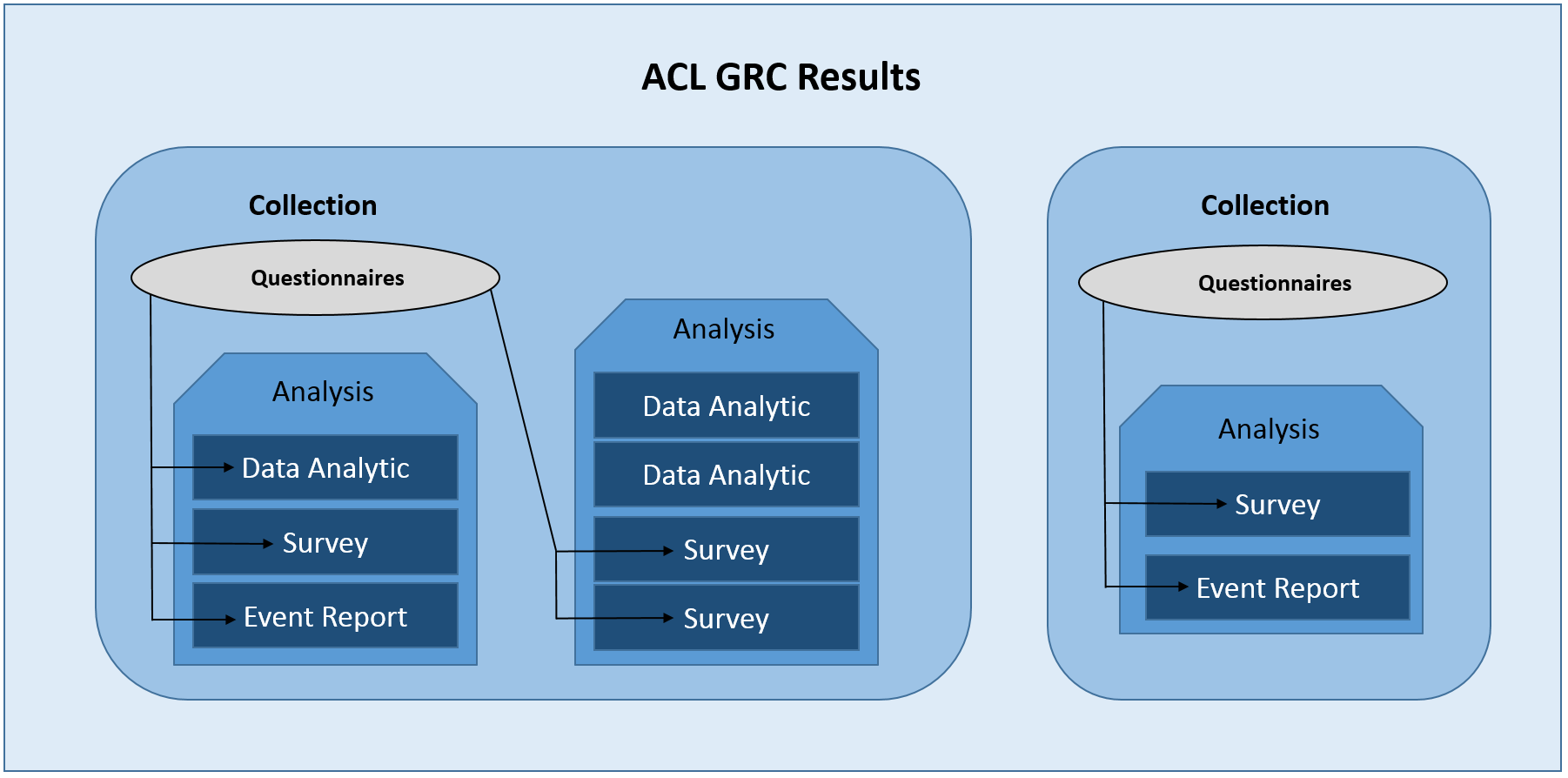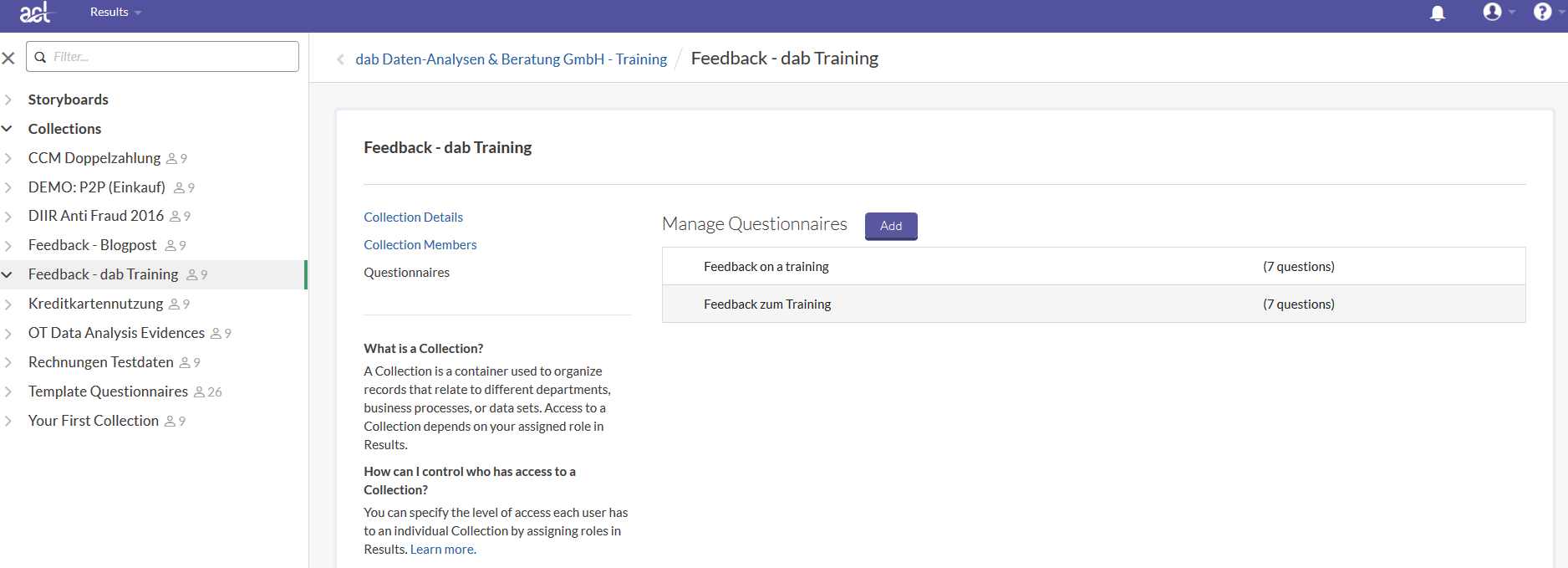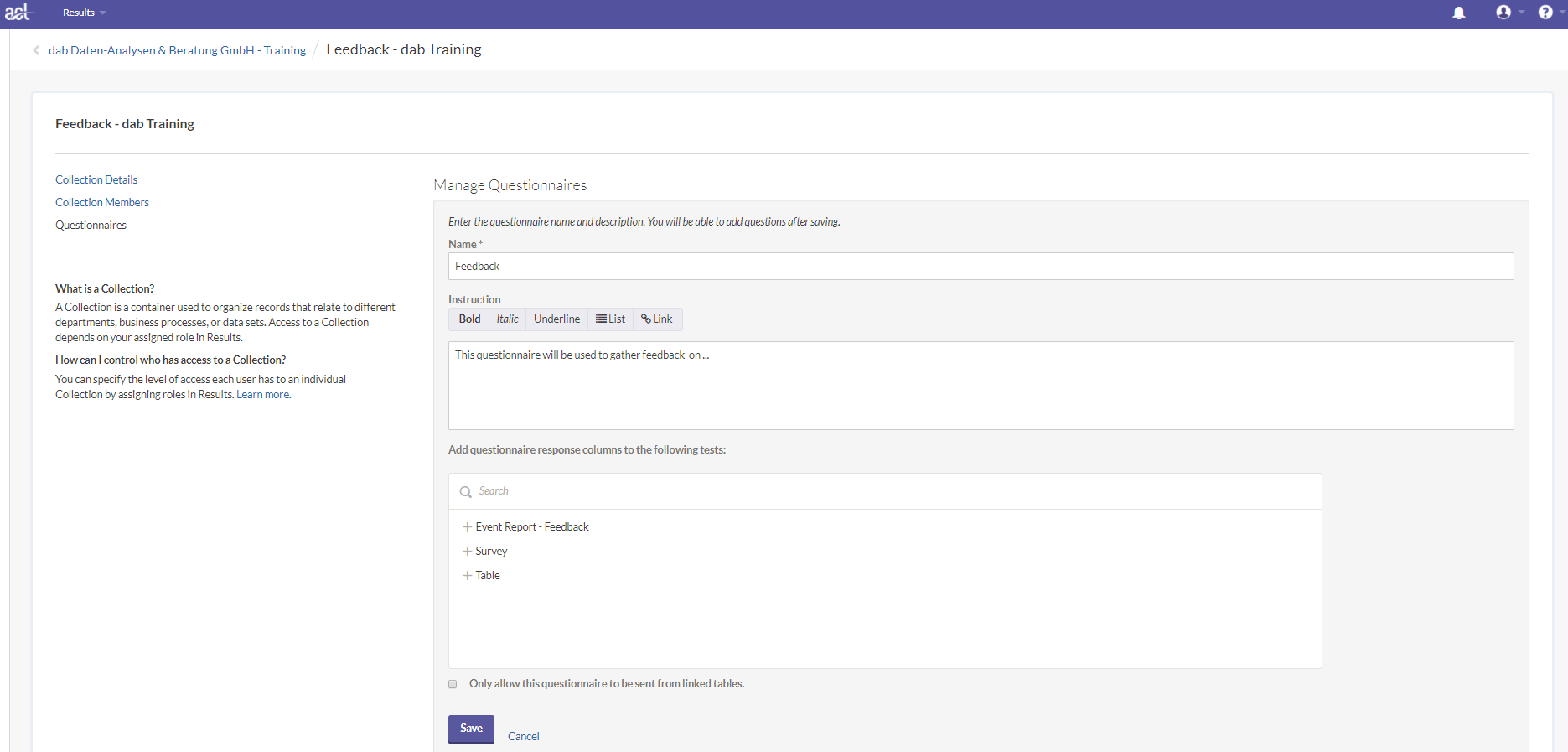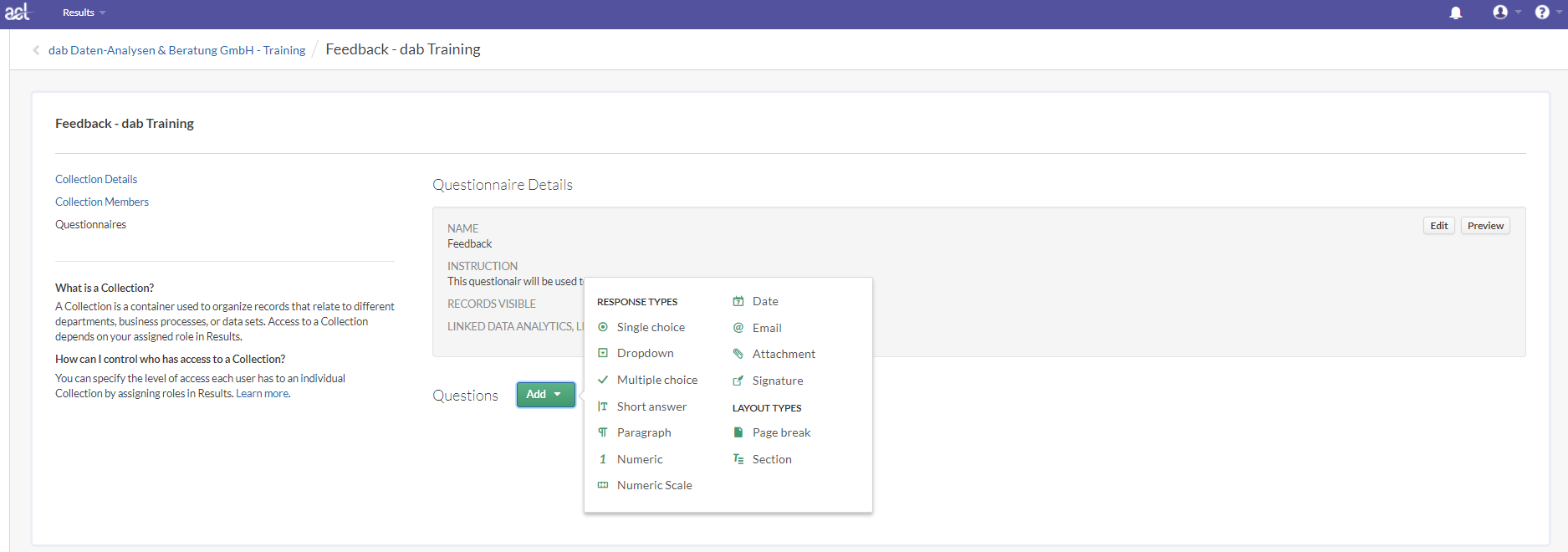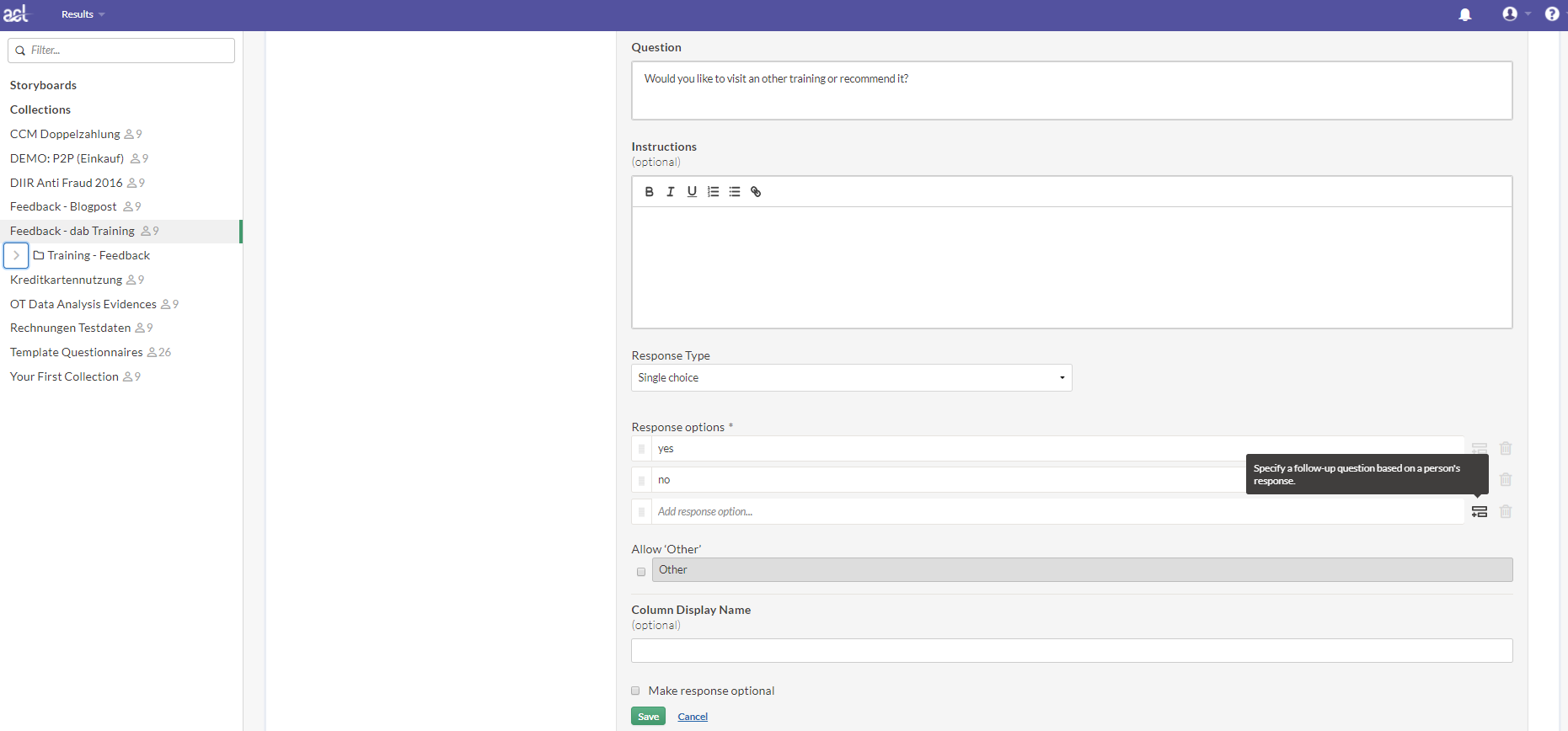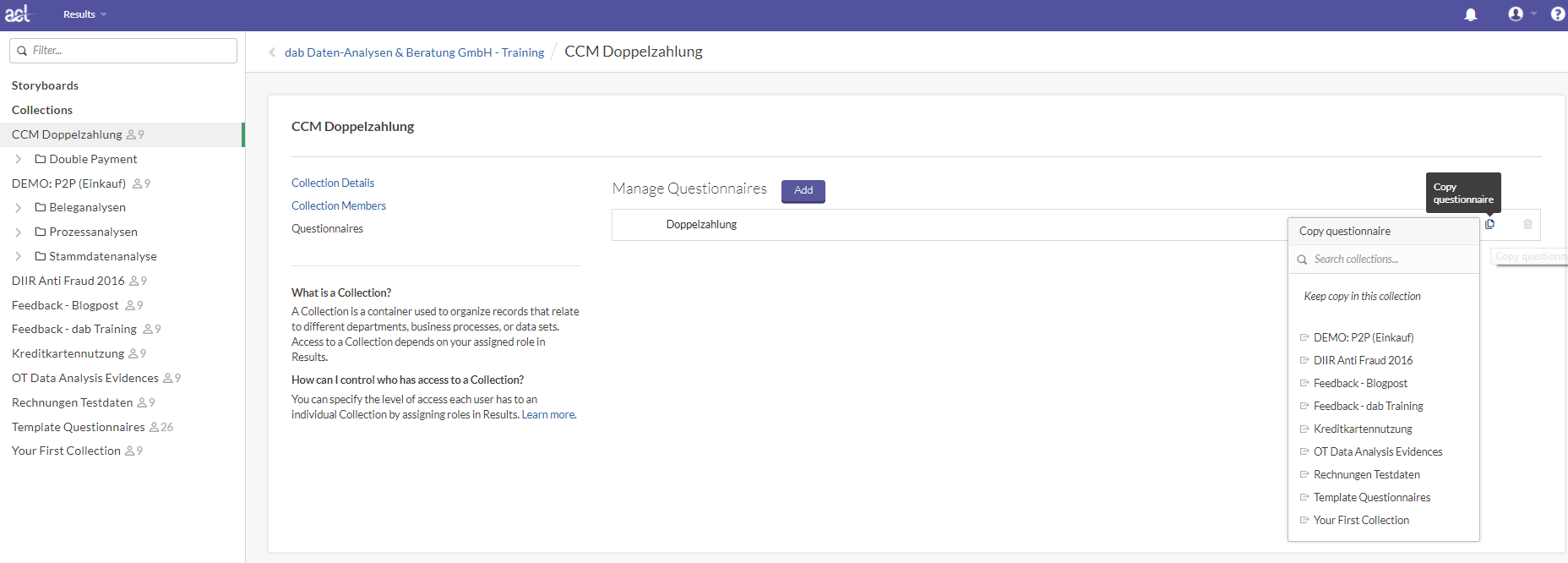ACL GRC - Fragebögen Teil 1
In an earlier blog you will already have read about self-assessments with ACL GRC. This time I would like to expand the topic a little, because with the questionnaires in the ACL GRC results module you have many more possibilities than "just" a self-assessment.
Basically the results module enables you to organize and visualize, monitor and resolve events identified by data analytics results. This is where questionnaires play a central role. So we will take a detailed look at them:
General
To create a questionnaire, first you need a collection in the results module of ACL GRC™. Questionnaires are saved at collection level, so afterwards you can use them in all analyses of the collection. An analysis can in turn contain different tables using questionnaires in a different way.
Creating a questionnaire
Questionnaires can be added to a collection by the appropriate menu item. In my example you see two questionnaires for feedback from participants in training that was staged. In an auditing context a questionnaire could then enable judging the procedure of an audit, for example. By collected feedback from the departments it is thus also possible to make the quality of the checks measurable, and possibly enhance it.
Quite fundamentally, a questionnaire can either be sent based on data from a table, to take a position on individual data records for example, or fully released from existing analyses. If this collection already holds analyses, you can state for each questionnaire whether the response columns of the questionnaire shall be added to the following table. Furthermore, you can set that the questionnaire may only be sent from linked tables. In this way a questionnaire on potential double payments could only make sense in the context of a table with corresponding analytics results.
For each question added you can then determine whether the response is optional, or obligatory — without which the questionnaire cannot be sent back. Ideally however, a questionnaire should be kept simple and short. If certain questions are still more or less complex, you can always resort to conditional logic, i.e. ask follow-up questions depending on the response.
Overall the creation of even lengthy questionnaires is not complicated, and a speedy procedure.
You can also look at a questionnaire at any time while drafting it to see how the recipient is going to see it. That way you know exactly how your questionnaire will arrive.
Copying a questionnaire
If you have already created a questionnaire in one collection and would like to have it in another collection, they are easily copied between the two.
Change to the collection in which you have the questionnaire, and then proceed to the copy interface. You can then choose in which collection the copy is to be saved. Even single questions can be exchanged between the questionnaires in this way. Just open a questionnaire, and use the copy interface again. Tip: You can also copy a questionnaire in the same collection if you need it in different languages, for instance. You will already have saved the structure, and only need to match the text.
Standard ACL provides a number of questionnaire templates. You can copy them from the collection "Template Questionnaires", and use them as they are, or modify them. Examples of such templates are surveys of customer satisfaction, pre-inspection questionnaires, or whistleblower and interference report hotlines.
For a complete list of all questionnaire templates including their organization into topics and details click here.


